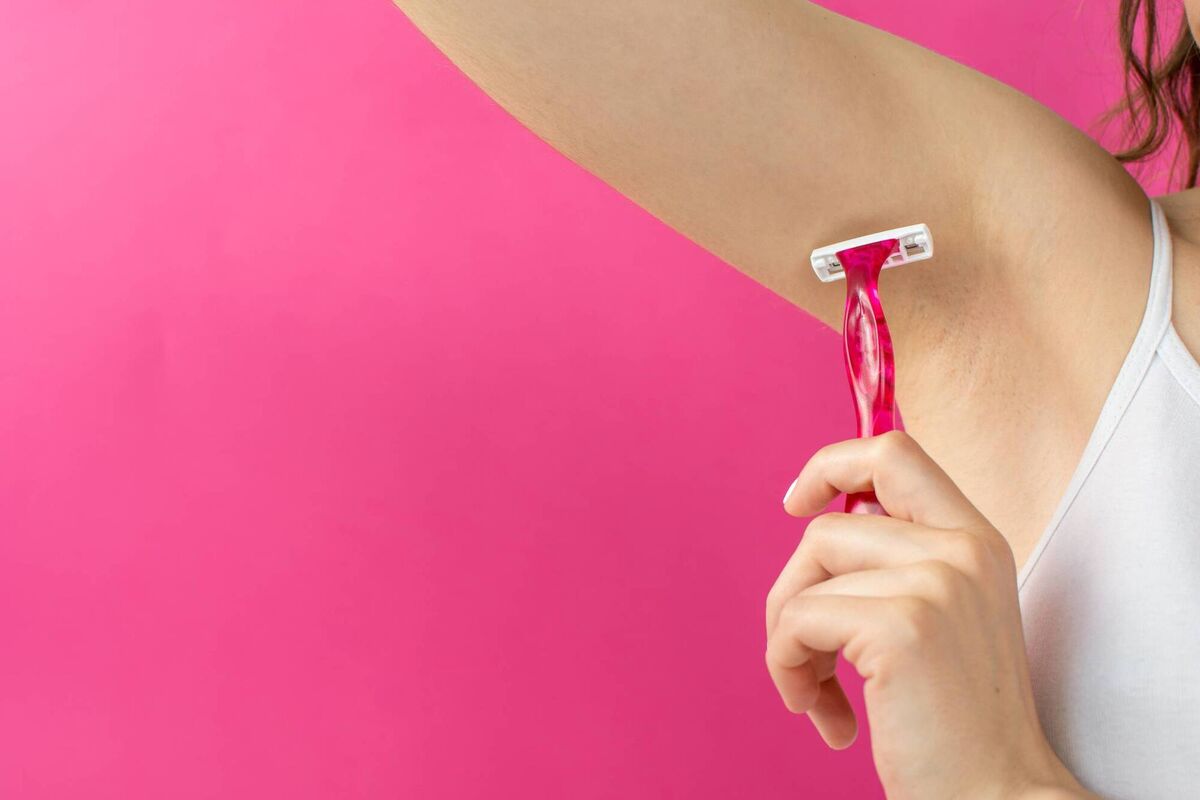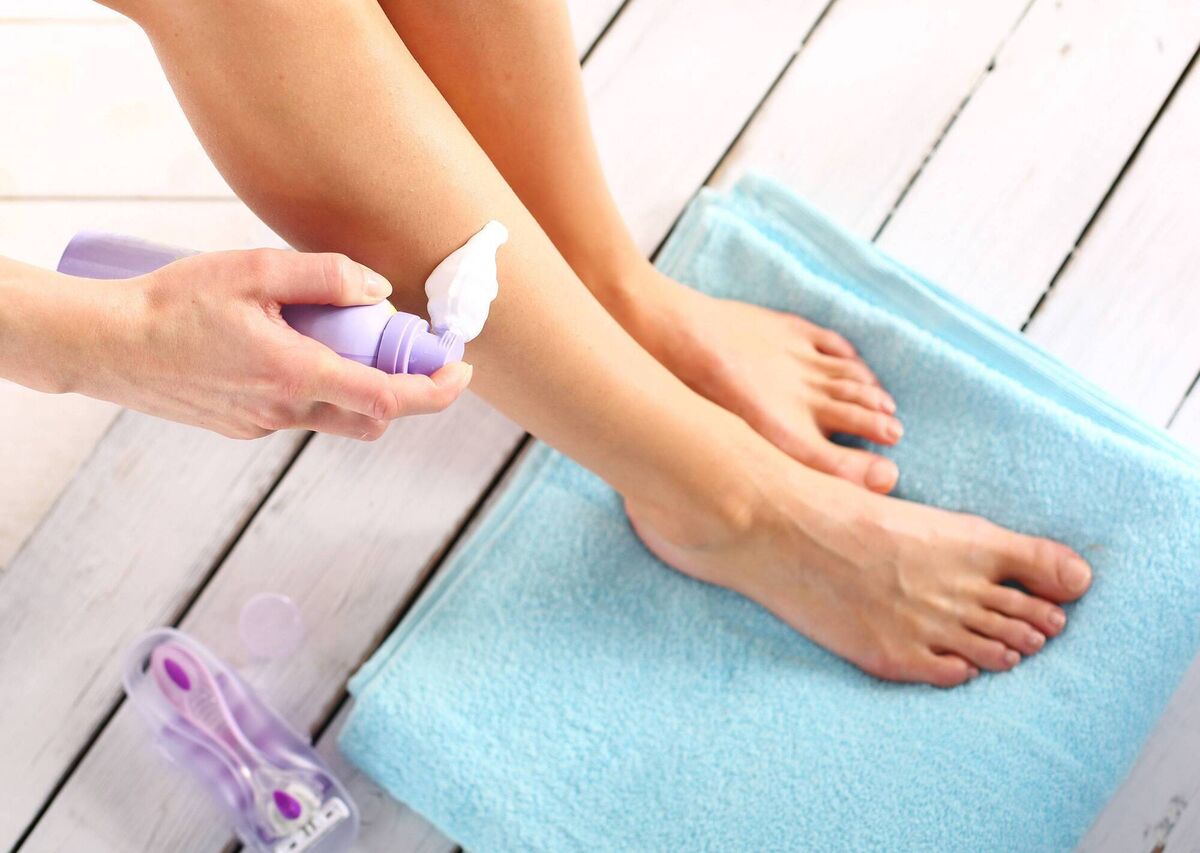The great summer debate: To shave or not to shave your body hair

Research showed 26% of women aged 16-24 felt they should shave their armpits, compared to 64% of women over 60. Picture: iStock
IT’S (technically) summer, and again, we ask the annual question — to shave or not to shave? I say ‘we’. I mean women, who are expected to follow the hair rules: Obligatory on your head, unwanted everywhere else. But unwanted by whom? Patriarchy? Capitalism? Yourself, having internalised the other two?
First, let’s be clear — we all do it to some degree. Dr Breanne Fahs, author of Unshaved, writes that “Between 92% and 99% of women in the US, UK, Australia, New Zealand, and much of Western Europe regularly remove their leg and underarm hair, while from 50% to 98% of women report that they removed some or all of their pubic hair.”
Fahs terms this “extraordinary compliance”. She says we’ve been socialised to think of female body hair as “unhygienic, disgusting, unfeminine, and contaminated”.
However, it seems we don’t want to talk about it.
It took another academic, Professor Karin Lesnik-Oberstein, 20 years to find a publisher for her 2007 book The Last Taboo: Women & Body Hair.
“Even feminist writers and academics had very little to say about why women remove their body hair,” she writes in the Shewolf blog. If they mention it at all, it’s to advocate either “not practising hair removal in order to return to a ‘natural’ body, or celebrating hair removal as “an enjoyment of beautification”.
She wanted to “understand more why it was done — what it meant.” In a nutshell, it seems we have got our ‘cultural’ confused with our ‘natural’.
“The belief that women’s body hair is ‘gross’, or ‘disgusting’, or tainting of their reputations speaks to the punitive qualities of women violating traditional gender roles,” says Fahs.
“That said, none of that is actually scientifically true. Women’s body hair is remarkably protective against bacteria and other intruders. Gynaecologists have grown increasingly concerned with the removal of pubic hair and its links to staph infections and such.”
Why then is the female smooth/male hairy construct more embedded than an ingrown pube?
I’ve been everywhere, from werewolf to egg and back; it’s always on a sliding scale of laziness. While liking the sensation of smoothness, often I just can’t be bothered. Yet despite laziness and conscious awareness that female hairlessness is a manmade construct, as a Gen X woman, I remain brainwashed enough to always have razors, creams, and wax strips in my bathroom. They can go unused for ages, but they’re there.
“Gender is powerful, and the rules of gender are omnipresent in our lives,” says Fahs. “It is always hard to violate the unwritten but powerful rules of gender.”
Lynn Enright, in her book Vagina: A Re-Education, comments on how the practice of “paying someone to inflict pain on you by pulling your pubic hair out by the roots” is “undeniably bizarre”.
Anyone who has ever had a stranger doing things to them with warm wax will concur — however, context is all. “I believe there are far bigger and more pressing issues than pubic hair,” she writes.
Alongside period poverty, FGM, reproductive rights, and post-natal care, to wax or not to wax is hardly the question.

History of hair-removal
Humans have always removed their body hair: The ancient Egyptians invented sugaring, a precursor to waxing, as they associated body hair not with gender but with social hierarchy (only servants were hairy). Current norms of female hairlessness stem from the advent of fashion photography (legs and armpits) and the mainstreaming of porn aesthetics — the Brazilian wax arrived via Manhattan in 1990, originally connotating sexual adventurousness until porn sent us all bald. However, the rise in manscaping suggests hairlessness around the genital area is not strictly women-only.
But unless you’re a male swimmer, hairless legs and pits are still heavily gendered. When my partner shaves his pits for hygiene reasons, he says he feels self-conscious because he’s been socialised to think of hairiness equalling manliness. When I don’t shave mine, I feel self-conscious for the opposite reason — that hairiness is unwomanly, which is biological nonsense.
The older women are, the more conditioned they tend to be. YouGov research from 2021 showed that 26% of women aged 16-24 felt they should shave their pits, compared with 64% of women over 60.
Bel Olid, author of Hairless, says the elimination of women’s body hair, particularly on their vulvas, “blurs the line between prepubescent girls and grown women”, adding that it’s “particularly disturbing” that many men think this is sexually appealing.
It’s “intrinsically feminine and even sexy when body hair is present as it’s a biological marker of sexual maturity,” says Olid. “Instead we’ve reached a point where it’s the contrary.”
Much of the social control over women’s bodies comes from family members and friends who let them know when they are performing femininity ‘correctly’, says Olid. “We can choose not to partake in body-policing. Gossiping about someone else’s looks is a way of setting what is acceptable, a way to let everyone know what they have to do to be a part of our group. If we stop judging bodies, more people can feel comfortable with their choices.”
A recent meta-analysis of pubic hair removal practices showed that “women are prone to express stronger associations with feelings of cleanliness, comfort, sex appeal, adherence to social norms within their peer group, and affordability as influential factors influencing their chosen pubic hair style”.
We spend a lot on keeping ourselves artificially hairless. According to Harper’s Bazaar, salon waxes can average around €27,000 over a lifetime unless you DIY at home, in which case the lifetime cost of razors, creams, wax strips, etc is just under €8,000. Permanent laser hair removal can cost thousands.
Yet despite us associating hairlessness with cleanliness, Fahs notes how it’s no longer standard medical practice to shave women before C-sections. A 2016 US study found a higher prevalence of STIs among those who groomed, but this is likely due to greater sexual activity rather than actual grooming causing STI infection — similar to the risk of getting a shaving rash.

Embrace your body hair
Perhaps female hairlessness will go the way of corsets and bras — shrugged off by upcoming generations of women who couldn’t be bothered to shave. Hair-embracing celebs include Miley Cyrus, Emma Watson, and famously Julia Roberts in 1999 for five seconds (we’re still talking about it). Adele has said, with characteristic candour: “No man is telling me to shave my fucking legs.”
Ungirl, a sex-positive Instagram site, posts how “it shouldn’t be radical for me not to shave my body hair,” while Januhairy, also on Instagram, encourages young women to embrace their winter body hair. There’s even been a micro-trend in Seattle for dyeing your armpit hair, which, while fun, seems like a faff.
Like most of her peer group, my Gen Z daughter, 23, remains ambiguous about the hair/no hair discussion and is more concerned about avoiding single-use plastic disposable razors than being hairy.
“I don’t shave my legs or pits that often and don’t feel pressure to,” she says. “Most people just do what they feel comfortable doing. I don’t think it’s such a big deal, despite all the available products. It’s more socially normal to have hairy armpits and legs. I think it’s cool; it shows that the person doesn’t care what others think. It rebels against how women are told we should look.”
Or as the Ungirls on Instagram put it, “Rock a bush or dare to go bare, you do you.”
A century of hair removal
During the First World War, soldiers returned home carrying shaving kits given to them by Gillette. Their wives began borrowing the kits, and Gillette realised there was a gap in the market. In 1915, Gillette invented the first lady razor, as women’s clothing changed to reveal more legs and armpits.
Remington followed with the first women’s electric razor in 1940, wax strips in the 1960s, and laser treatment in the 1970s. As the second wave of feminism began in the 1960s, female body hair became a battleground. In 1972, Ms magazine published an article titled ‘Body Hair: The Last Frontier’, encouraging women to embrace hairiness. Feminist Betty Friedan, author of The Feminine Mystique, criticised it, arguing body hair is less important than issues like child care, reproductive rights, etc. ‘Hairy feminist’ became a pejorative term that lingers to this day.
The Brazilian wax made its Western debut in a Manhattan salon in 1990, imported by six sisters from Bahia, northeast Brazil — Carrie in Sex & The City undergoes one. Since then, the pendulum has swung back towards hairiness — or rather, a less prescriptive attitude, leaving to shave or not to shave down to the individual.

Unlimited access. Half the price.
Try unlimited access from only €1.50 a week
Already a subscriber? Sign in
CONNECT WITH US TODAY
Be the first to know the latest news and updates

Celebrating 25 years of health and wellbeing










